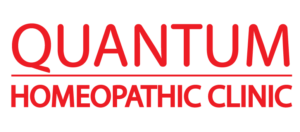I. Introduction A. Definition of Homeopathy – Homeopathy is a system of alternative medicine founded by Samuel Hahnemann in the late 18th century. It is based on the principle of “like cures like,” where a substance that can cause symptoms in a healthy person can be used to treat similar symptoms in a sick individual. B. Principles of Homeopathy – Law of Similars: The primary principle of homeopathy, stating that a substance that can produce symptoms in a healthy person can be used to treat similar symptoms in a sick person. – Individualization: Recognizing that each person is unique and requires an individualized treatment approach based on their specific symptoms and characteristics. C. Overview of Single Remedy Concept – In homeopathy, the single remedy concept refers to the practice of prescribing one well-indicated remedy at a time to address the totality of symptoms in a patient.
II. Understanding the Single Remedy Concept A. Similimum Principle 1. Law of Similars – Homeopathic remedies are chosen based on their ability to produce symptoms similar to those experienced by the patient. 2. Individualization of Treatment – The selection of a single remedy is based on a detailed understanding of the individual’s unique symptom picture, including physical, mental, and emotional aspects. B. Holistic Approach 1. Addressing the Whole Person – Homeopathy aims to treat the whole person rather than just the disease or specific symptoms, taking into account physical, mental, and emotional aspects. 2. Individualized Treatment Plans – Each person’s treatment plan is tailored to their specific symptoms, considering their overall health, susceptibility, and underlying causes. C. Law of Direction of Cure 1. Identifying the Vital Force – Homeopathy recognizes the vital force or life energy within an individual, and treatment aims to stimulate this force for healing. 2. Facilitating the Healing Process – The single remedy chosen stimulates the vital force, leading to a direction of cure where symptoms improve from within.
III. Necessity of Single Remedy A. Optimal Treatment Response 1. Accurate Matching of Symptoms – By selecting a single remedy that closely matches the patient’s symptom picture, the likelihood of a positive treatment response is increased. 2. Avoiding Confusion and Overlapping Effects – The use of a single remedy ensures that the effects of the remedy can be clearly observed and evaluated, without the potential confusion caused by multiple remedies. B. Minimizing Side Effects 1. Reduced Risk of Drug Interactions – By using a single remedy, the risk of potential interactions with other medications is minimized, promoting a safer treatment approach. 2. Gentle and Safe Treatment – Homeopathic remedies, when used as single remedies, are highly diluted and gentle, reducing the likelihood of adverse reactions. C. Enhanced Observation and Assessment 1. Clarity in Monitoring Progress – With a single remedy, changes in symptoms and overall well-being can be more accurately observed and assessed, facilitating appropriate adjustments to the treatment plan. 2. Accurate Evaluation of Symptoms – The use of a single remedy allows for a clear evaluation of the response to treatment, helping the homeopath make informed decisions for further management.
IV. Challenges and Considerations A. Complex Cases and Multiple Symptoms 1. Importance of Prioritization – In complex cases with multiple symptoms, the homeopath must prioritize and focus on the most characteristic and prominent symptoms for remedy selection. 2. Sequential Treatment Approach – Sometimes




